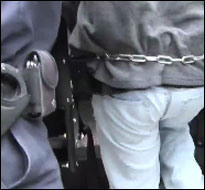As of 2010 there were an estimated 11 million unauthorized immigrants in the United States. The U.S. government has in recent years intensified its enforcement of immigrantion laws, deporting record numbers of unauthorized persons. At the same time, migration patterns are changing, and newer arrivals in the Hispanic community are moving to different areas of the country.
The outcry over the Arizona immigration law in 2011 — legislation that some criticize for encouraging racial profiling — has caused many to scrutinize how local police departments are enforcing federal immigration regulations. Many assume that in places where the political climate runs against unauthorized immigrants — and where longer-standing community members perceive the “threat” of encroachment by new arrivals — there is automatically a backlash, manifest through law enforcement crackdowns. But research suggests these dynamics are often complex.
A 2012 study in the Journal of Public Administration Research, “Why Do (Some) City Police Departments Enforce Federal Immigration Law?” looks at factors stimulating enforcement of federal immigration laws for cities near the borders. The study, from Arizona State University and John Jay College-CUNY, analyzes data from a survey of police chiefs from 237 large- and medium-sized cities nationwide over the period 2007 to 2008. The evidence indicates that there is a “significant reservoir of bureaucratic discretion” among police forces in enforcing such laws, and the researchers sought to pinpoint the drivers of more- or less-intensive enforcement.
The study’s findings include:
- Among the 237 police departments surveyed, police officers checked immigration status in 87% of arrests for violent crimes, 64% of the arrests for domestic violence, 59% of interviews of victims of suspected human trafficking and 21% of traffic violations.
- The presence of a Hispanic police chief is associated with a reduction in the intensity of enforcement of immigration-related laws.
- In cities where the majority of voters are Republican and police chiefs report to the mayor and city council rather than a professional manager, there are significant increases in the level of enforcement. “Police practices — in the form of the police enforcement score — do have a relationship with city government policy. More aggressive immigration policing is associated with a stricter city policy.”
- “Nearly half of the city governments have sent no clear policy signal regarding immigration policing to their police department (according to the chief),” the data suggest. “This means that departments in such cities are necessarily devising their own strategies for how to deal with possible unauthorized immigrants or — if there are no departmental guidelines — are leaving decisions about such interactions to street-level decisions by officers.”
- “Contrary to the threat hypothesis, the rate of increase in the local proportion of immigrants, all else equal, is not associated with our measures of city policy or police practices. And in fact, cities with high shares of immigrants in the population tend to experience less aggressive enforcement. Moreover, seemingly objective measures of community crisis, such as rates of unemployment or of violent crime, do not show any significant relationship to the outcomes we have measured.” When surveyed, police in communities with large immigrant populations would enforce regulations in 11% fewer situations.
- Cities near Canada are more likely (65%) to have no city policy on immigration policy than their southern border colleagues (45%).
The results suggest that local immigration enforcement is more multifaceted than political party leanings, perceived demographic “threats” or the composition of immigrants in a community. “Supposedly ‘objective’ local conditions that people worry about regarding immigration, such as crime rates, unemployment rates or the sheer amount of recent growth in immigrants, don’t seem to matter very much in influencing the amount of local immigration-enforcement activity,” the researchers note. “What seems to matter more are local political or administrative factors (the percentage of Republican voters, the presence of a Latino chief).”
For statistical background on immigrant enforcement actions by federal authorities, see this 2011 report from the U.S. Department of Homeland Security.
Tags: Latino, Hispanic, law, policing


Expert Commentary